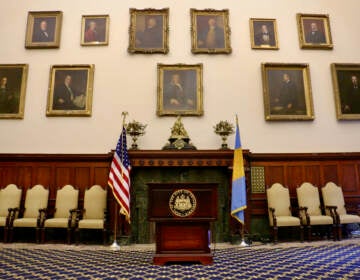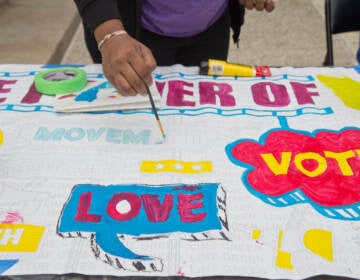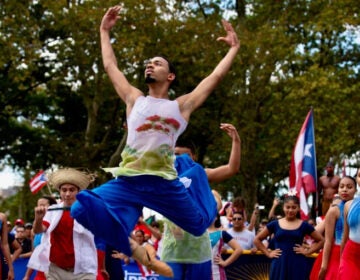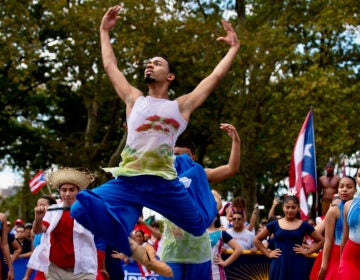Ideas to steal: What Philly’s next mayor could borrow from other cities to support the arts
As the Philly mayoral race inches closer to the May 16 primary, here’s how other cities support and utilize arts in city government.
Listen 5:37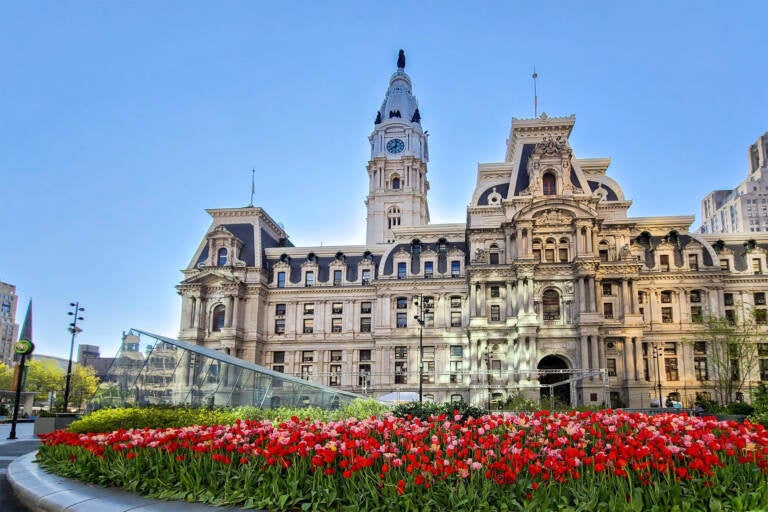
Tulips are pictured outside Philadelphia City Hall. (Mark Henninger/Imagic Digital)
What questions do you have about the 2023 elections? What major issues do you want candidates to address? Let us know.
This story is a part of the Every Voice, Every Vote series.
Earlier this week, the Greater Philadelphia Cultural Alliance released a voting guide based on issues related to arts and culture. Naturally, funding for the arts is right at the top.
The city has never had a dedicated funding stream for the arts. The amount of money allotted for the Philadelphia Cultural Fund is based on the vagaries of budget negotiations, ranging from as much as $5.5 million, as it is now, to as little as nothing, which it has been in the past.
The CEO of the Cultural Alliance, Patricia Wilson Aden, said that’s not how it works in other cities.
“Whether we’re talking about San Francisco, Portland, Denver, Milwaukee — there are instances where communities have come together and said, ‘Arts and culture is worth investing in,’” she said. “There are models across the country for that.”
In San Francisco, for example, its Grants for the Arts program is funded out of the city’s hotel tax. In 2021, it distributed about $14 million.
Portland, Oregon, has a simple Arts Tax of $35. Every adult over the poverty line must pay $35 a year to the arts, a tax voters have approved over and over. Portland typically collects between $8 and $9 million, most of which goes towards arts education.
Denver, Colorado
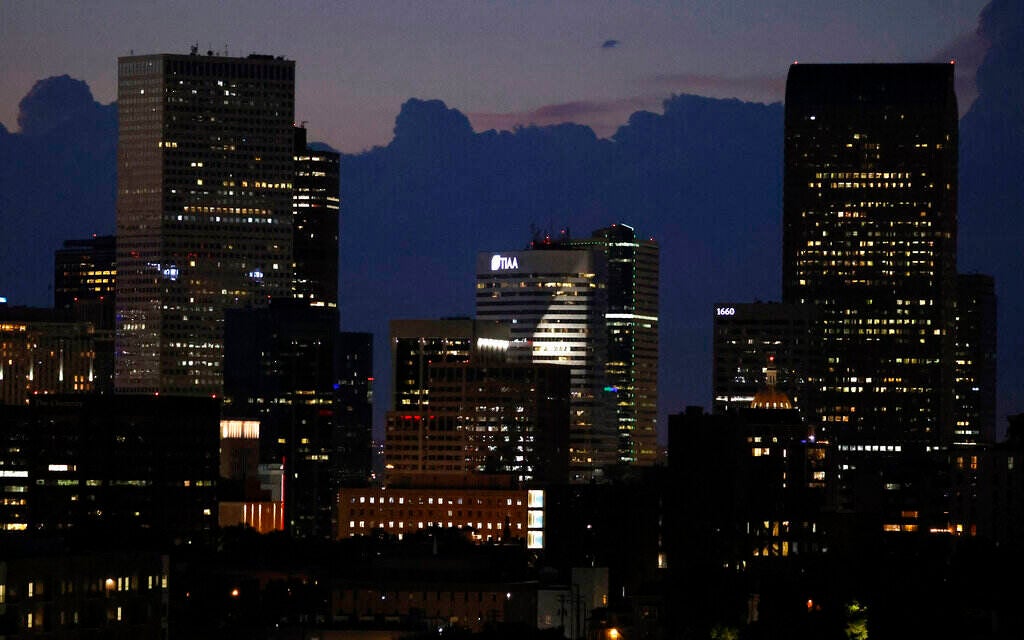
Denver has a unique system codified by state law, which created a Scientific and Cultural Facilities District (SCFD) in the great Denver metro area, involving seven surrounding counties. Funded by a 0.1% sales tax, the SCFD typically distributes more than $60 million annually.
“That’s extraordinary,” said Gary Steuer, president and CEO of the Denver arts philanthropic organization, Bonfils-Stanton Foundation. Steuer used to lead Philadelphia’s Office of Arts, Culture, and the Creative Economy, under former mayor Michael Nutter.
“I was talking to somebody from the NEA who was in town the other day and they had no idea that, in effect, Denver metro is getting almost half the amount of money that the entire country gets through the National Endowment for the Arts,” he said.
The money is distributed through a tiered formula based on the size of the organization. Amounts for the region’s larger organizations are determined by a central committee; those for smaller organizations are decided by boards in the individual counties.
The funding organization that Steuer leads, Bonfils-Stanton Foundation, is a private, relatively modest philanthropy giving away between $3 and $5 million a year. Much of that money is focused on small- to mid-sized organizations, with an eye on equitable distribution. As an example, Steuer points to the Black dance company Cleo Parker Robinson Dance, which is relatively small in size but large in cultural significance on par with Philadelphia’s Philadanco. Bonflils-Stanton has tripled its support from $20,000 to $60,000 annually.
The financial attention Bonfils-Stanton is able to give smaller organizations is possible because Denver’s larger anchor organizations, like the Denver Art Museum and the Denver Symphony Orchestra, are taken care of by public funds.
“If SCFD didn’t exist, we would feel enormous pressure to be significant funders of those big institutions,” he said. “But we don’t fund them.”
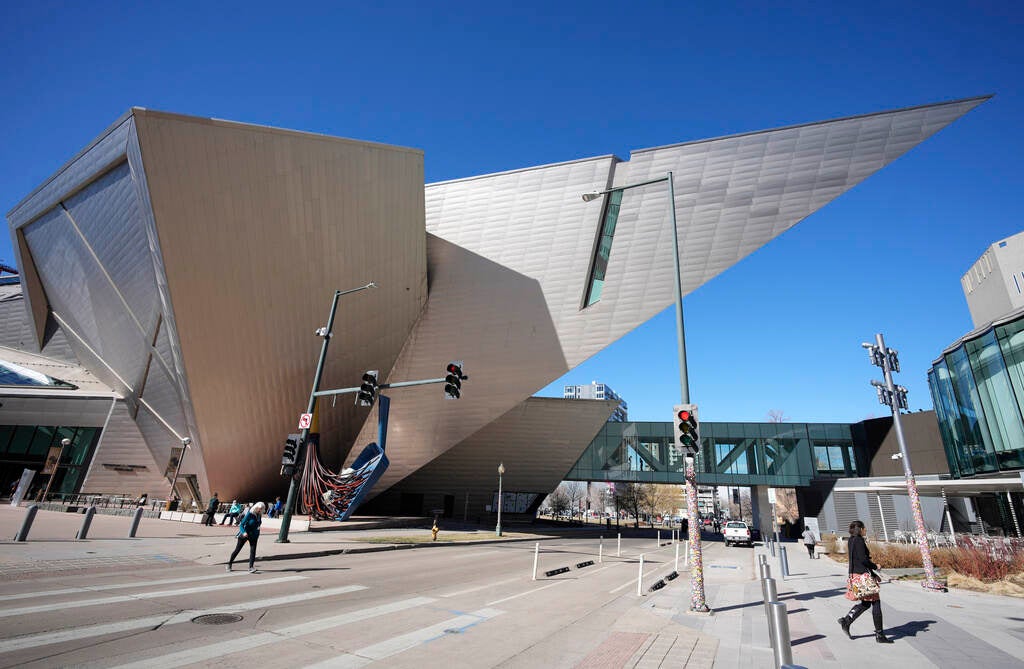
Denver is also unique in that it has Red Rocks, the legendary outdoor auditorium carved out of the side of a mountain. Red Rocks is owned by the city but operated as a commercial concert venue, programmed largely by the national promoter AEG Presents.
The profits from Red Rocks funds Denver Arts and Venues, a city agency that distributes some of those profits as arts grants. Last year Arts and Venues distributed $785,000.
Steuer said it’s crucial for a major city to have dedicated funding streams for the arts, particularly ones with large, legacy cultural and historical organizations that can soak up most of the available philanthropic dollars.
This is true more so in Philadelphia, where the institutions are older, more entrenched, and larger than in Denver. The Denver Museum of Art has a budget of about $30 million, while the Philadelphia Museum of Art has a budget of about $60 million. The Colorado Symphony uses about $14 million a year, compared to the Philadelphia Orchestra which runs on about $50 million.
From his experience in Philadelphia’s City Hall, Steuer knows the city’s cultural sector has “a lot of mouths to feed” and no one wants to see legacy organizations falter on their watch, so arts funding tends to be distributed inequitably.
Fargo, North Dakota
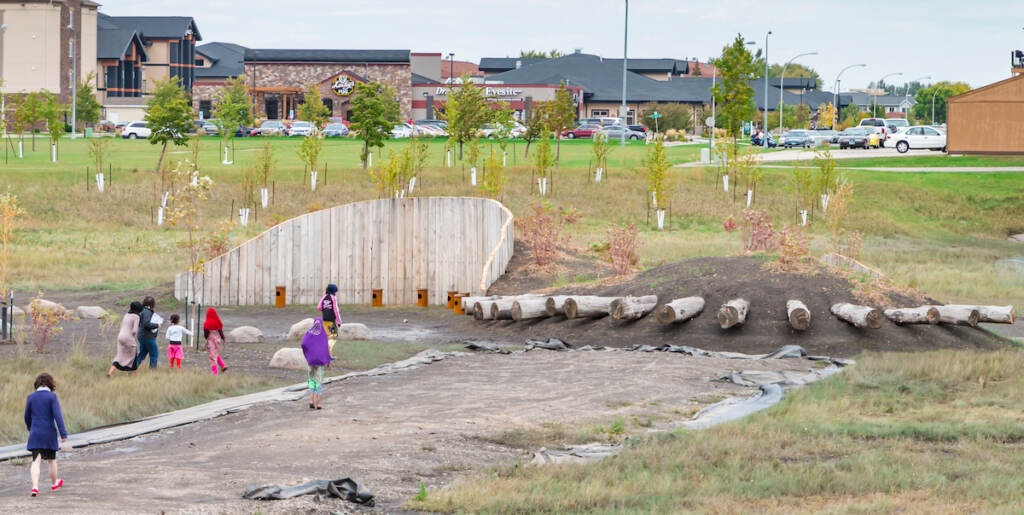
Funding is not the only way a city is able to engage with the arts. Over the past several years many cites, including Boston, Austin, New York, Los Angeles, Nashville, and Minneapolis, have launched artist-in-residence programs wherein artists are embedded in municipal departments to help shape programs.
In 2010, Fargo, North Dakota, asked environmental artist Jackie Brookner to lead a major stormwater infrastructure development. The so-called Fargo Project has become a model for municipal-artist partnerships.
Fargo is at the confluence of six rivers, the largest of which is the Red River. The topography of the city is extraordinarily flat, giving runoff water nowhere to run. During periods of heavy rain, or when the Red River floods — which lately it has done every year — everything floods, sometimes creating a city-wide FEMA disaster area, as it did in 2009.

To combat the certainty of flooding, Fargo has about 20 water retention pools across the city, ranging in size from two to 20 acres each. One of the largest is in Rabanus Park on the west side of the city.
During periods of heavy rain or snow melt, water fills 18 acres of Rabanus Park about 13 feet deep, where it is held until the threat of flood recedes. When it’s not flooding, the basin is dry but unused: a waste of public land.
“Many people didn’t register that this is a space they could use when it’s dry,” said Fargo planning director Nicole Crutchfield. “It’s kind of flat, so your eye just skips over it.”
The city of Fargo hired Brookner to lead a community engagement project to reimagine the Rebanus Park retaining pool as a public amenity, a landscape of trails, water features, meadows, interactive sculpture, and education prompts.
The New York City-based artist came to Fargo about every two months for almost five years to devise ways to enroll and lead the surrounding community through a design process.
That process included making pottery bowls, performing traditional Native American dances, and cooking frybread, all as a means to guide the surrounding population into thinking critically about what their community wants the new outdoor space to be. That population includes Native Americans, immigrants from an estimated 20 countries, and children who would ultimately be the ones playing in the new park.
At the same time, Brookner had to navigate a bureaucracy of city departments and engineers through a creative process that at times could be “ambiguous,” according to an evaluation report the city commissioned after the project.
”The city did not have any set administrative process for art, acquiring art, or building amenities,” read the report, “Integrating Artists and City Planning: The Fargo Project Lessons Learned.” “The city planner, engineer, and administrator had to be comfortable with the uncertainty of the city’s role.”
Crutchfield credits Brookner’s personal intelligence, curiosity, and demeanor — her “deep listening” — with helping the city of Fargo become comfortable with being uncomfortable.
“It was more about, ‘This is something new and different, maybe we can learn something,’” she said. “It was more from a curiosity perspective, of a unicorn coming into City Hall.”

What the city discovered was that the problem it identified, of many acres of public land rendered unusable by flooding retention pools, was only the first problem. Crutchfield said when Brookner attempted to stage a large-scale community event for a design charrette with the neighbors, she discovered the neighborhood had no public gathering space of any significance.
“Usually we look at churches, schools, gymnasiums to find these meeting spaces, and we couldn’t find one,” she said. “So we’re looking at the neighborhood in a different way.”
The project also ran longer than anyone anticipated. What was supposed to be a one-year engagement became a five-year project.
Unfortunately, Brookner did not see the end result. She died of cancer in 2015 before construction was completed.
The Fargo Project not only changed Rabnus Park, but City Hall itself. Crutchfield said city staff had a deeper sense of the communities of Fargo.
“For one of our meetings, we thought we were going to a community meeting with a Bhutanese family, and it turned out we were invited to a wedding,” she said. “We actually went to the wedding first, and then we could talk about the space with the elders.”
“This is going to sound really trite, but when you’re in government and bureaucracy you can imagine there’s just a lot of fires I’m putting out every day, all day,” she said. “I would have these moments of inspiration, like, ‘Oh, yeah, this is why I became a landscape architect. This is why I became a city planner. This is why I work for the community. This is why.’”
Minneapolis, Minnesota
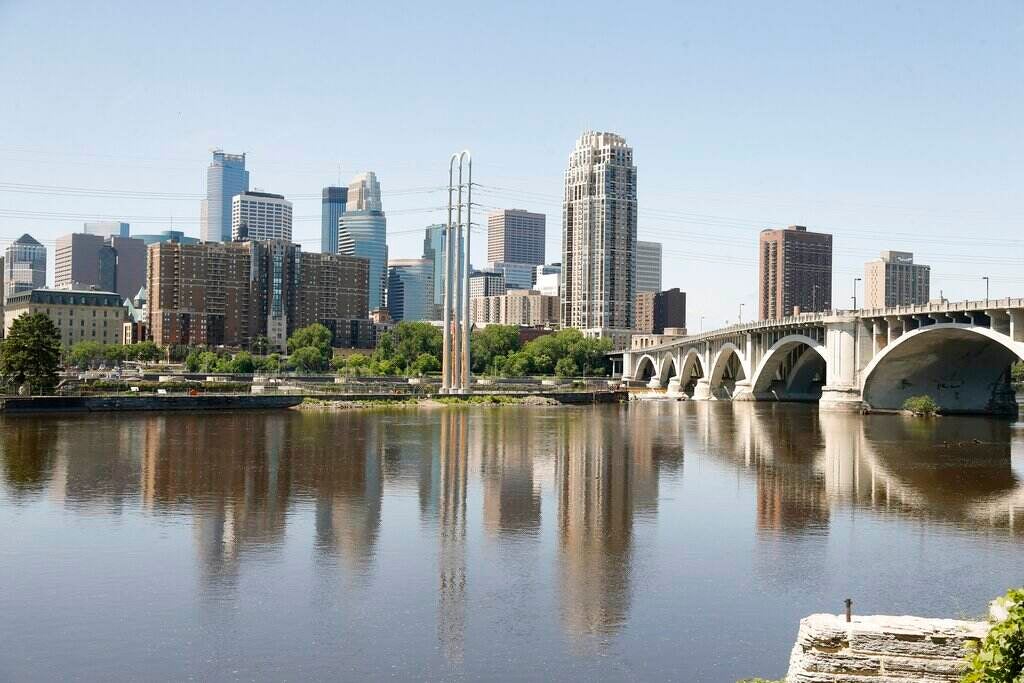
For 10 years, the city of Minneapolis, Minnesota, has embedded artists into various city departments to improve the staffs’ work. Artists in the Creative CityMaking program typically help with efforts to build trust with communities and engage residents in city initiatives.
Like in Fargo, the CityMaking artists in Minneapolis both help the city reach outward to its residents, and look inward to the departments and their sometimes inequitable structures and attitudes.
In 2015, artists Mankwe Ndosi and Reggie Prim started working with housing inspectors in Minneapolis’ Regulatory Services. They learned the relationships between tenants and inspectors is often acrimonious, and the regulatory staff is frequently burned out.
They also learned that inspectors “had uneven perceptions of the disparities faced by communities of color who make up a majority of the tenants the project was focused on reaching,” according to a report by the National Endowment for the Arts, which funded the Creative CityMaking program.
The artist’s first step was not to work with tenants, but city inspectors. They engaged Regulatory Services staff in performance techniques of Theater of the Oppressed, a theater movement that aims to build direct relationships between performers and audiences, usually toward social justice ends.
“We think we need to get some skills under your belt to be able to be receptive to the community that you’re going to engage,” the artists said in a statement. The project, Hearing Tenants Voices, lasted four years until 2019.
A 2021 evaluation report commissioned by Minneapolis’s Office of Arts and Culture recommended artists in the Creative CityMaking (CCM) program be selected based on their previous community-building and social justice work. In that way, city staff might adjust themselves to the work of the artist, rather than vice-versa with the artist complying to the needs of the department.
“CCM allows city staff to join as partners in this work and find the intersections between the needs of their department and the social change work of the artists and their communities,” read the report.
In Philadelphia, Jane Golden sees the Minneapolis Creative CityMaking program as a model for how the city can leverage artists toward solving serious civic problems. As the leader of Mural Arts Philadelphia, Golden already does similar partnerships, called Porch Light, with the city’s Department of Behavioral Health and Intellectual disAbility Services.
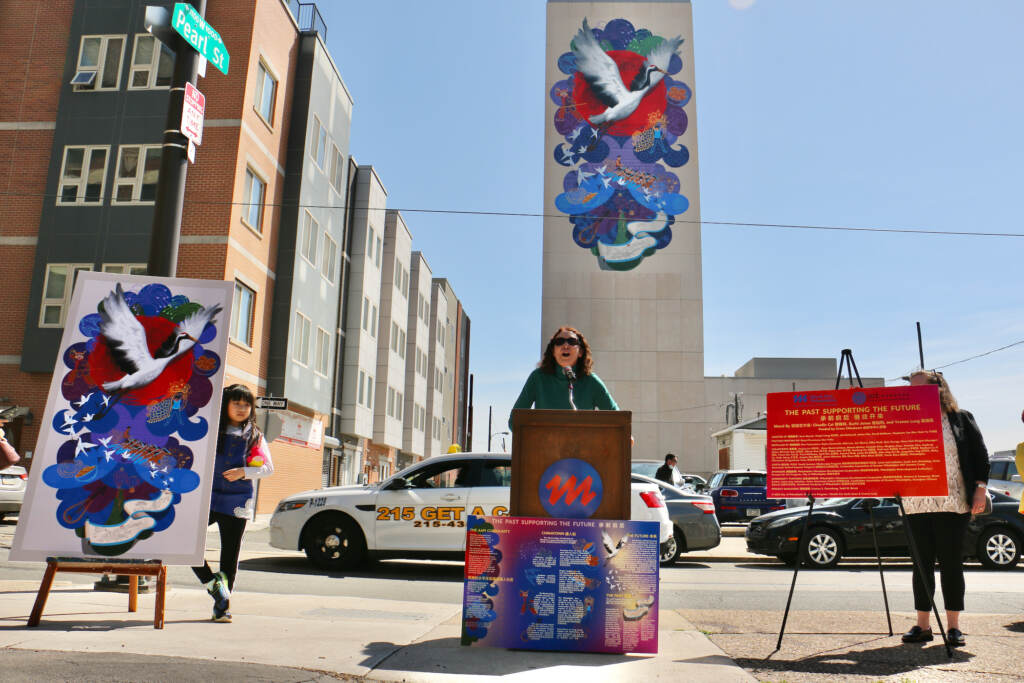
She said to make such a program more accepted and widespread within city government, with its staunchly entrenched hierarchies, would take the will of the new mayor.
“Where you are in city government really matters,” Golden said. “If the mayor has your back, it’s a big difference. It can be life changing, actually, in how you do business.”
 This story is a part of Every Voice, Every Vote, a collaborative project managed by The Lenfest Institute for Journalism. Lead support is provided by the William Penn Foundation with additional funding from The Lenfest Institute, Peter and Judy Leone, the John S. and James L. Knight Foundation, Harriet and Larry Weiss, and the Wyncote Foundation, among others. Learn more about the project and view a full list of supporters here.
This story is a part of Every Voice, Every Vote, a collaborative project managed by The Lenfest Institute for Journalism. Lead support is provided by the William Penn Foundation with additional funding from The Lenfest Institute, Peter and Judy Leone, the John S. and James L. Knight Foundation, Harriet and Larry Weiss, and the Wyncote Foundation, among others. Learn more about the project and view a full list of supporters here.

Get daily updates from WHYY News!
WHYY is your source for fact-based, in-depth journalism and information. As a nonprofit organization, we rely on financial support from readers like you. Please give today.



